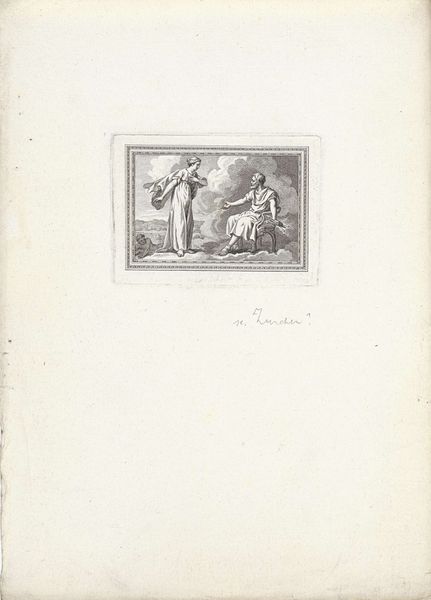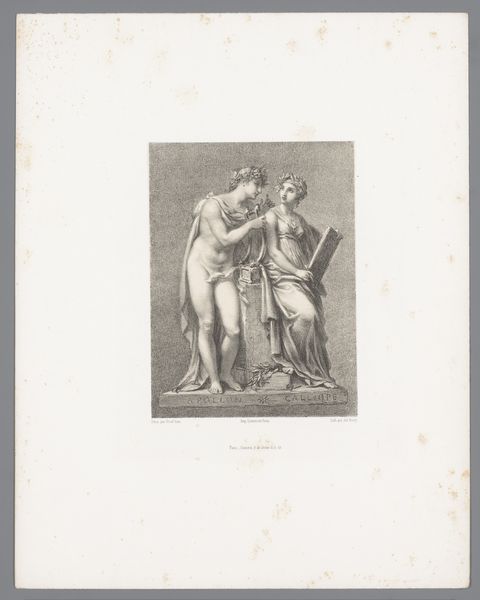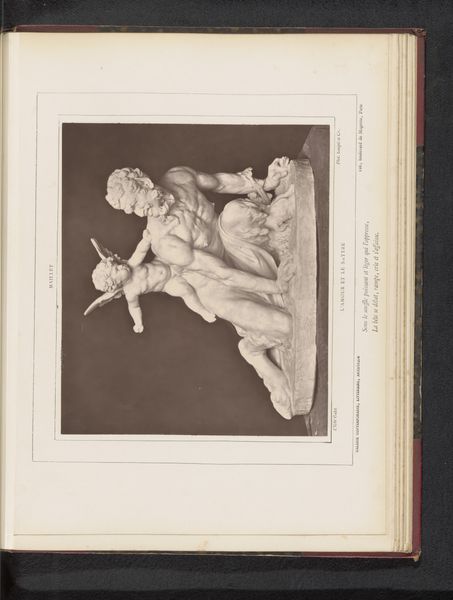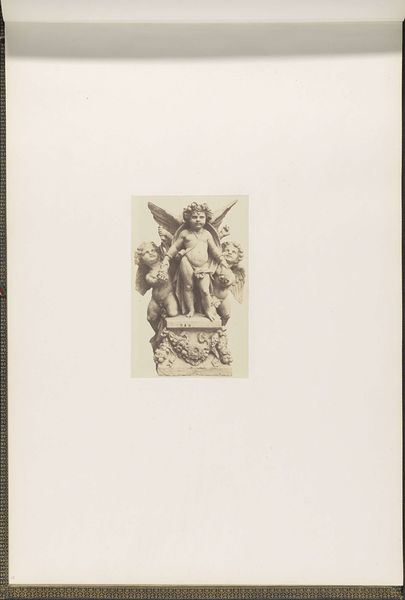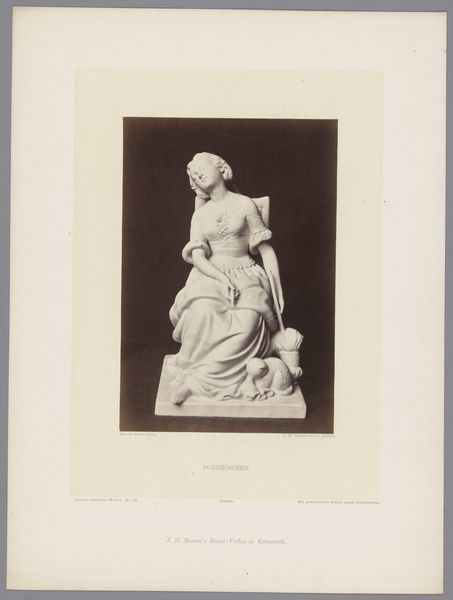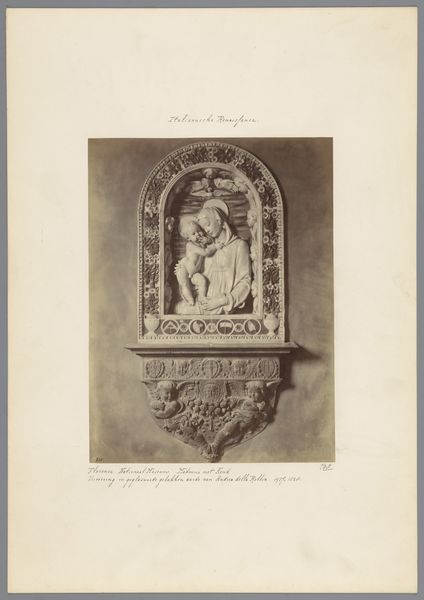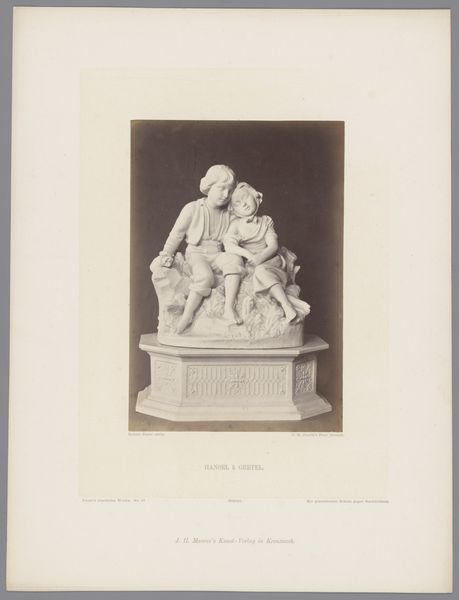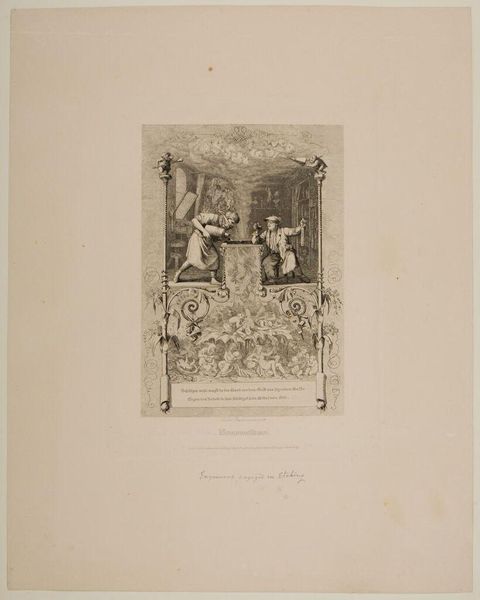
Dimensions: height 180 mm, width 156 mm, height 450 mm, width 318 mm
Copyright: Rijks Museum: Open Domain
This photograph depicts Maurits Verveer’s design for the Dutch National Monument. The central image, a relief, shows a group of figures, two of whom are clasping hands in what appears to be a gesture of unity. Consider this handshake, a motif that echoes across time. From ancient Roman depictions of “dextrarum iunctio,” symbolizing agreement and loyalty, to its adoption in fraternal organizations and political imagery, the handshake carries the weight of concord. Yet, its meaning is not fixed. It can signify peace, as we see here, but also submission or even betrayal. The power of the handshake lies in its performative nature, a physical act that binds individuals or groups together. This gesture, loaded with historical and cultural baggage, taps into our collective memory, triggering subconscious associations with trust, partnership, and the desire for mutual understanding. It is a symbol that continues to evolve, reflecting the changing dynamics of human connection.
Comments
No comments
Be the first to comment and join the conversation on the ultimate creative platform.
